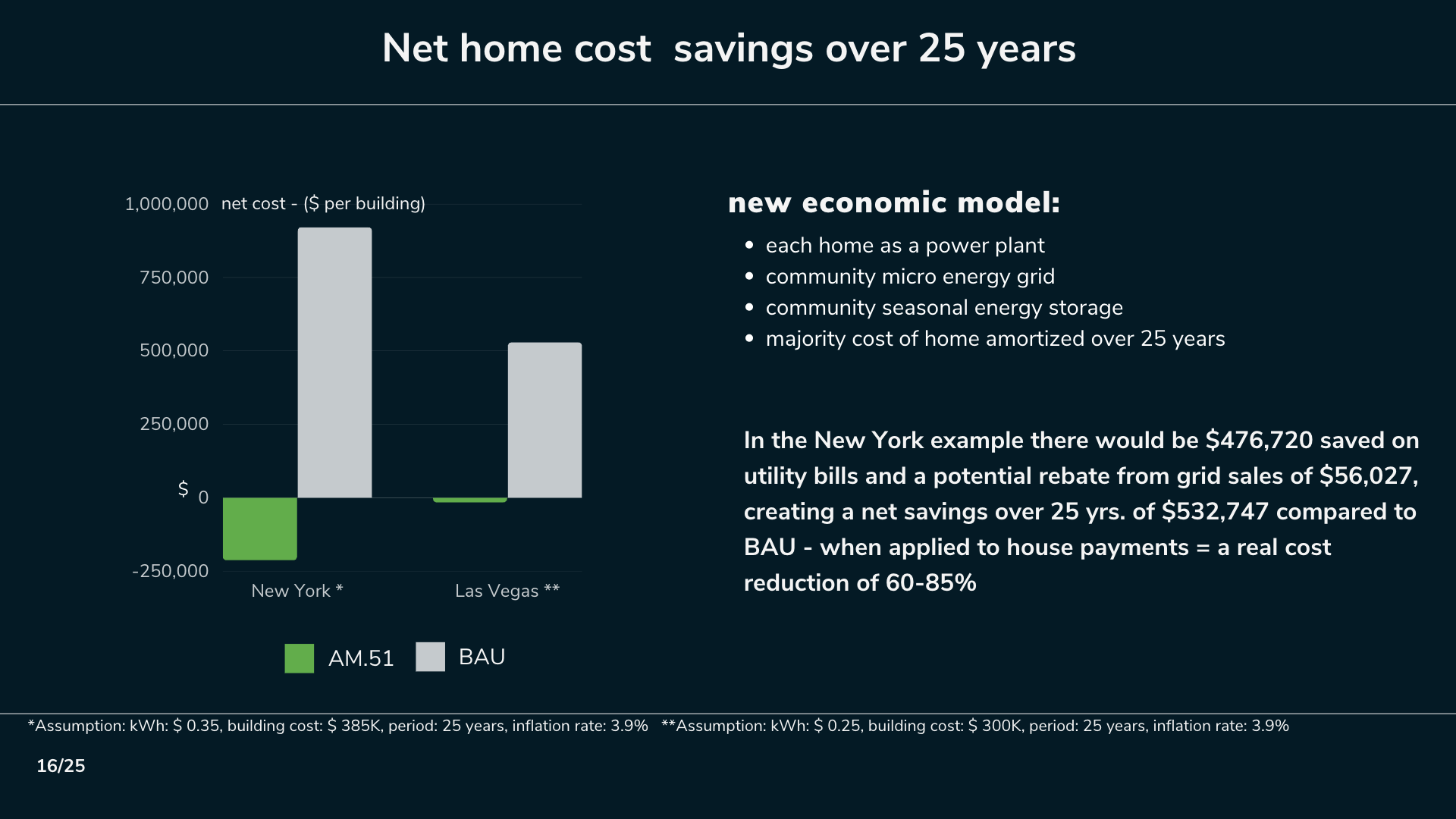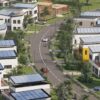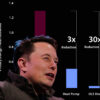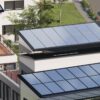Misconception #1: energy efficient PH designs cost more to build: they don’t
There’s been a constant refrain for decades, propagating the idea that improving energy efficiency in buildings and homes will cost more. Never mind that the people doing the estimating have never built an energy efficient building, or that they make a living providing inefficient “business as usual” construction or design.
Even Bill Gates, in his book on climate change “How to Avoid a Climate Disaster” coined the phrase “green premium” that implies that sustainable technology or design should, does and will cost more.
When it comes to Passive House and high performance energy efficient design, this is all simply wrong.
Cost of construction materials in isolation is a meaningless metric
It is true that things like double walled construction, triple paned windows and overall high quality materials can cost a bit more. However, any additional cost in these areas are more than made up for by the fact that greater energy efficiency requires smaller and cheaper HVAC systems with less complex heat and AC distribution systems, for example.
It’s important to note that by “oversized” we are talking about waste by a factor of ten, as in ten times larger and more expensive than needed, compared to the energy needed when maximum efficiency is designed into the building.
Buildings today hide their mistakes by using oversized mechanical systems. And they use more energy than they should as a consequence”
– Ken Levenson, executive director at the non-profit Passive House Network
In nearly every case the difference in cost for unnecessary, massive heating and cooling systems vs. right sized and better functioning ones, more than offsets any additional cost for quality or quantity of materials.
Ultimately it is the design itself, what Andreas Benzing of AM51 and Urban Villa calls “propagated human intelligence” that upgrades performance by a factor of ten at a cost of zero. Zero, since design for a low performance design is billed at the same rate as the superior maximum efficiency version.
When I am asked to design a low performance, inefficient building, which strangely does happen from time to time, I answer that it will cost more, simply because our systems and protocols are geared toward maximum efficiency as a default standard”
-Andreas Benzing, Architect and cofounder of Urban Villa, AM51 and Fractalize™
This quote echos the reality on the ground in Europe, for example, where outdated, obsolete double pane windows are an expensive, special order item.
The fact is, high performance energy efficient designs are already able to achieve parity, here in the USA, and will only get less expensive as they become the de-facto standard.
Layers of benefits have been ignored for decades
Integrative design chooses, combines, sequences, and times technologies in smarter ways. It cuts capital cost by not adding more or fancier widgets but using fewer and simpler ones—by leaving out unneeded stuff.
– Amory Lovins, RMI
For decades the likes of R. Buckminster Fuller, Amory Lovins and Wolfgang Feist, the founder of the Passive Haus Institute, have been demonstrating the power of efficiency as a byproduct of integrative design, yet relatively few are aware of their powerful design efficiency message.
The special circumstances of our time make it impossible to ignore this message any longer.
To continue the example above, the fact that construction costs are not higher, and in many case are lower when high performance designs are employed, is most clearly demonstrated when the added benefits of integrated MEP systems are also factored in.
Just as right-sizing heating and cooling systems for a 10x more efficient building represents significant savings in building costs, by adding and optimizing energy production and management systems, the ultimate savings and benefits only increase.
Reduced costs for utilities over time can have a substantial positive impact on real cost of ownership. This metric is vastly underestimated, however, because the baseline, highly subsidized, and therefore “cheap” combustion and fossil fuel systems are out of proportion to the real costs.
And even that does not factor in the ultimate cost of extending and exacerbating the negative effects of GHG emissions and planet warming.
While it is impossible to make an apples to apples comparison between a standard dwelling, single or multi-family, and a complete, sustainable living system, once the depth and breath of the benefits and savings are understood, a comparison becomes moot.
No one would choose business as usual, inefficient designs any more than, looking forward, anyone would choose a ICE car over an EV like a Tesla.
The electrify everything conundrum: phasing out subsidized oil
Artificially low energy costs created by oil subsidies have not only led to increased fossil fuel consumption and out-of-control greenhouse gas emissions but have also created a deeply ingrained subjective perception, among consumers and the media, that these energy sources are more affordable than sustainable alternatives.
Reduced costs for utilities over time can have a substantial positive impact on real cost of ownership. This metric is vastly underestimated, however, because the baseline, highly subsidized, and therefore “cheap” combustion and fossil fuel systems are out of proportion to the real costs.
– Author
This misleading perception has been a powerful headwind and barrier to widespread acceptance and adoption of renewable energy sources and electrification.
Because the perception is so deeply ingrained in the conscious “reality” that consumers have experienced for nearly a century, the idea that sustainable energy and efficient buildings can be measured against subsidized costs and prices is accepted, no matter how absurd it is once the facts are in focus.
The true comparison for efficiency is the all electric, non subsidized cost of a low efficiency, 20th century standard building or home, against the same all electric system with 10X greater energy efficiency built into the design.
In this apples-to-apples comparison there is an even more significant difference in real cost of ownership over the 30+ year lifespan of the home or building, and it can be measured and monetized.
Real cost of ownership and forward financing for a future we all need
False perceptions based on a century of subsidized combustion products must first be overcome. Next, an understanding of the real value of energy efficiency and integrative systems design must be understood and recognized.
Once this is accomplished, calculations, such as the one below, can be appreciated.
This chart illustrates how an all electric home, once it is mandated as standard, will be significantly more costly to run, since the mirage of subsidized fossil fuel systems prices will no longer be the norm.
Once the new cost basis is understood and absorbed into public consciousness, “suddenly” the savings possible by a maximum energy efficient design coupled with and integrative systems approach for energy production systems and all appliances will be demonstrably massive and seen as such.
These savings, in turn, can be financed, similar to the approach already being employed by companies such as Swell Energy, where anticipated energy bills are used to forward finance the upfront costs of the energy systems installation and purchase.
These costs are subsequently recuperated through payments based on the estimated savings in utility costs. Although current examples of this financing method are designed for “profit on the back end” to compensate the commercial concerns involved, a true cost, potentially subsidized version, based on maximum efficiency, has potential to benefit the home owner and make real, affordable housing more viable.
This approach allows us to fund the upfront costs effectively, similar to the proven methods already in place within these pioneering companies. This method allows for a zero-money-down incentive to upgrade to a far superior energy system.
With a maximized and optimized ultra-high performance design of the entire system starting with the building itself, it will be possible to offset a significant percentage of the purchase price by the cumulative future savings, at the time of purchase.
This can be a powerful catalyst for creating sustainable, energy efficient infrastructure at scale, and can be the first step toward solving two of the planet’s greatest challenges, affordability and GHG mitigation, accelerated and enabled by smart systems design.
- An Embarrassment of Riches: Economic Benefits of Grid-interactive Efficient Homes
- High-Performance Retrofits: a Sensual Solution to Satisfy your Limbic System
- NYC Smoke Alarm Ignites a Paradigm Shift in Housing
- This Climate Solution is a Sleeping Giant
- Revolutionizing Power: Integrative Design for NY’s 2024 All-Electric Mandate








